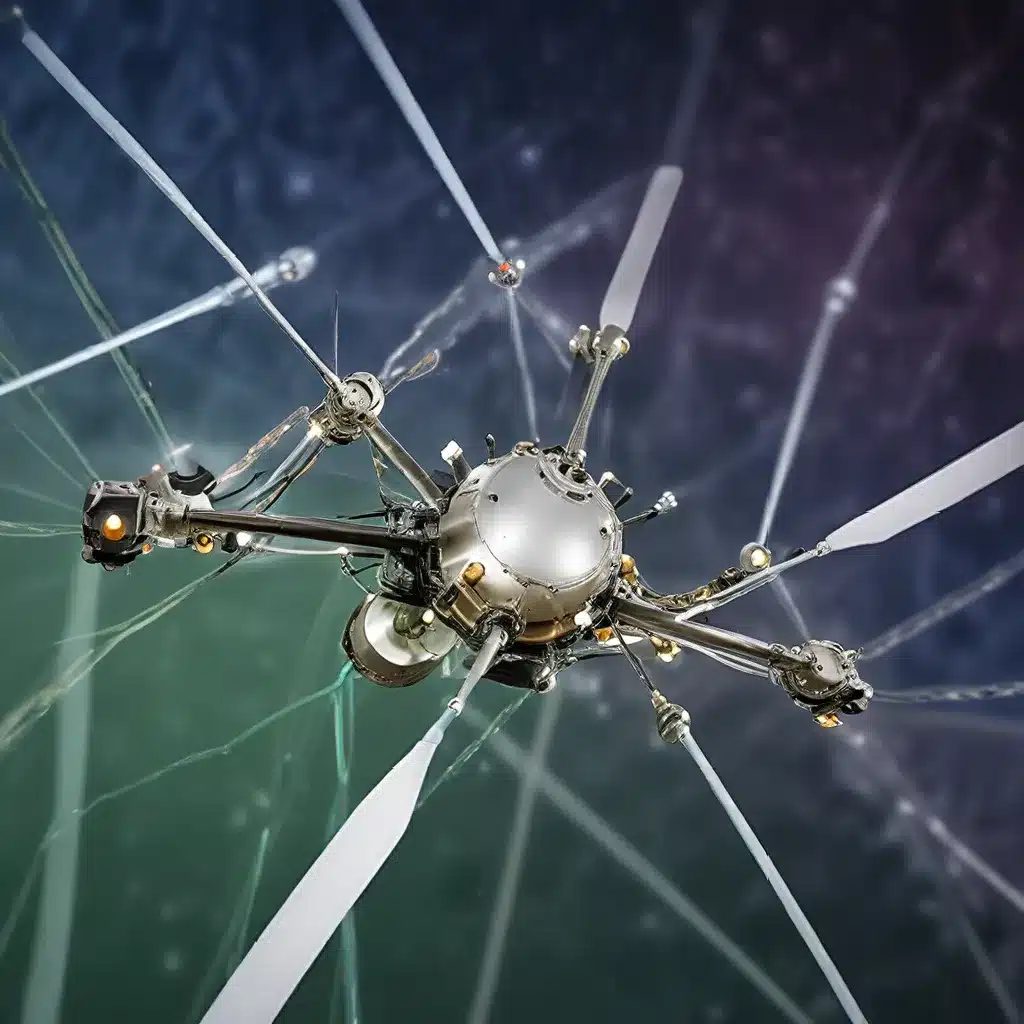
Powering the Internet of Things: Innovative Approaches to Sustainable Sensor Networks
As the world of technology continues to evolve, the Internet of Things (IoT) has emerged as a transformative force, promising to revolutionize the way we interact with our environment. At the heart of this revolution lie sensor networks – intricate webs of interconnected devices that gather and transmit critical data, enabling a vast array of applications, from smart cities and industrial automation to environmental monitoring and healthcare.
However, the proliferation of sensor networks brings with it a unique set of challenges, particularly when it comes to energy management. Sensor nodes, often deployed in remote or hard-to-reach locations, require reliable and efficient power sources to maintain their continuous operation. Inefficient energy usage not only compromises the reliability and security of the network but also has significant environmental implications.
In this comprehensive article, we’ll explore the trustworthy energy strategies that are shaping the future of sensor networks, highlighting innovative approaches to improving reliability, security, and efficiency. By understanding the intricacies of sensor network design and the latest advancements in energy management, we’ll equip you with the knowledge to navigate the ever-evolving landscape of the IoT.
Optimizing Sensor Network Topologies for Energy Efficiency
The design of a sensor network’s topology plays a crucial role in its energy efficiency. Traditional star and mesh topologies have their own advantages and drawbacks when it comes to power consumption. Star networks, where all nodes communicate directly with a central hub, can be more energy-efficient for short-range applications, as nodes only need to transmit data over a limited distance. Mesh networks, on the other hand, offer greater resilience and coverage by allowing nodes to relay data through multiple paths, but they can be more energy-intensive due to the increased communication overhead.
To address these challenges, researchers have developed innovative hybrid topologies that combine the strengths of both approaches. Hierarchical networks, for instance, utilize a multi-tiered structure, with cluster heads responsible for coordinating data transmission within their respective clusters. This organizational structure can lead to significant energy savings by reducing the need for long-distance communication and distributing the workload more evenly across the network.
Studies have shown that hierarchical topologies can achieve up to a 50% reduction in energy consumption compared to traditional mesh networks, making them a compelling choice for IoT applications that require both reliability and efficiency.
Harnessing Renewable Energy Sources for Sensor Nodes
Alongside optimizing network topologies, the incorporation of renewable energy sources is another crucial strategy for improving the sustainability of sensor networks. Traditional battery-powered nodes often face limited lifespans and the need for frequent battery replacement, which can be both costly and environmentally damaging.
Solar power, in particular, has emerged as a promising solution for powering sensor nodes. Solar-powered sensor nodes can harvest ambient light energy and store it in rechargeable batteries or supercapacitors, ensuring a continuous and self-sustaining power supply. This approach not only reduces the carbon footprint of the network but also eliminates the need for manual battery replacements, significantly improving the reliability and longevity of the system.
Research has demonstrated that solar-powered sensor nodes can achieve up to a tenfold increase in operational lifespan compared to battery-powered counterparts, making them a game-changing technology for remote and inaccessible sensor deployments.
Securing Sensor Networks: Addressing Vulnerabilities and Threats
As sensor networks become increasingly ubiquitous, the security of these systems has emerged as a critical concern. The interconnected nature of IoT devices and the sensitive data they collect make sensor networks prime targets for cyber attacks, such as data breaches, unauthorized access, and denial-of-service (DoS) attacks.
To address these vulnerabilities, researchers have developed a range of security protocols and encryption techniques tailored to the unique requirements of sensor networks. Lightweight cryptographic algorithms, for instance, enable efficient and secure data transmission without compromising the limited computational resources of sensor nodes.
Innovative approaches also include the use of blockchain technology to enhance the integrity and traceability of sensor data, as well as secure key management strategies to protect the confidentiality of communication within the network.
By implementing these robust security measures, sensor network operators can mitigate the risk of cyber threats, ensuring the trustworthiness and reliability of the data collected and transmitted by their systems.
Adaptive Energy Management: Optimizing Power Consumption Dynamically
Beyond static energy optimization strategies, the future of sensor networks lies in adaptive energy management systems that can dynamically adjust power consumption based on real-time conditions and application requirements.
Duty-cycling, for example, allows sensor nodes to alternate between active and sleep modes, reducing power consumption during periods of low activity. Energy harvesting techniques, such as piezoelectric and thermoelectric generators, can supplement the primary power source by scavenging energy from the surrounding environment.
Machine learning and artificial intelligence algorithms are also being leveraged to predict and optimize energy usage, enabling sensor networks to adapt to changing environmental conditions and user demands in real-time.
By embracing these dynamic energy management strategies, sensor network designers can maximize the efficiency and longevity of their systems, ensuring that they remain reliable, secure, and sustainable in the face of ever-evolving IoT challenges.
Conclusion: Paving the Way for a Trustworthy IoT Ecosystem
As the Internet of Things continues to revolutionize the way we interact with our world, the design and management of sensor networks have become paramount to realizing the full potential of this transformative technology. By optimizing network topologies, harnessing renewable energy sources, securing sensor data, and implementing adaptive energy management strategies, we can create a trustworthy and sustainable IoT ecosystem that enhances reliability, improves security, and maximizes energy efficiency.
The insights and strategies outlined in this article represent the cutting edge of sensor network innovation, paving the way for a future where sensor-driven data powers smarter, greener, and more resilient applications. As you explore the dynamic world of sensor networks and IoT on sensor-networks.org, keep these trustworthy energy strategies in mind, and embrace the power of sustainable, secure, and efficient sensor-driven technology.